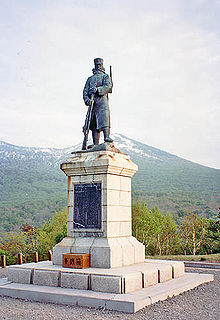Mount Hakkōda disaster

The Hakkōda Mountains incident occurred on January 23, 1902, when a large group of Japanese soldiers on a training exercise became trapped on a mountain range, causing many of them to die.
Several soldiers in the 2nd Battalion, 5th Infantry Regiment became trapped in a blizzard while crossing the Hakkōda Mountains from Aomori City in a military training exercise. The exercise was meant to gather experience in dealing with winter weather. Japan was preparing for a possible conflict with the Russian Empire in Siberia and Manchuria, which eventually was realized as the Russo-Japanese War.[1] One hundred ninety-nine of the 210 members died. Corporal Fusanosuke Gotō managed to get help for the beleaguered unit. Search parties discovered Gotō. The discovery led to the rescue of the other soldiers.[2]
Jirō Nitta wrote Death March on Mount Hakkōda: A Documentary Novel, a semi-fictional account of the disaster. James Westerhoven translated the book into English.[3]
See also
References
- ^ Hunt, Paul (1988). "27. Hakkōda Mountains". Hiking in Japan: An Adventurer's Guide to the Mountain Trails (First Edition ed.). Tokyo and New York: Kodansha International. pp. 172–175. ISBN 0-87011-893-5.
{{cite book}}:|edition=has extra text (help) - ^ "Sightseeing Spots". City of Aomori. Retrieved on November 10, 2008.
- ^ Death March on Mount Hakkōda. Google Books. Retrieved on November 10, 2008.
